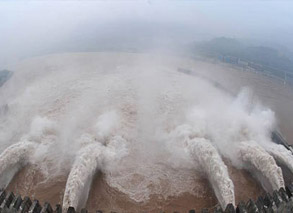Authorities harness Internet to smooth quake relief
2010-04-21 09:01 BJTSpecial Report: 7.1-magnitude Quake Hit Qinghai, China |
BEIJING, April 20 (Xinhua) -- Since the 7.1 magnitude earthquake struck Qinghai Province April 14, a small group of officials at the China Earthquake Administration in Beijing have been busy on their computers.
Their job is to update a micro-blog with the latest developments of the rescue work by the China International Search and Rescue Team (CISAR), in the quake zone.
The first entry was published on the micro-blog at 8:46 a.m. April 14, less than an hour after the tremor in the Tibetan Autonomous Prefecture of Yushu, and more than 300 entries have followed.
Members of the public have posted comments and questions for the administration, which has admitted that identifying the dead and missing has been difficult as the authorities had few records of a large migrant population.
The public have tracked progress in rescuing the trapped and treatment of the survivors as well as the latest situation in Yushu on official websites of government departments, blogs and micro-blogs of journalists.
The Qinghai provincial government has joined with popular on-line networking site Tianya to publicize the most urgent needs in the quake zone. Netizens can donate on the website, which organized transport of relief materials to the disaster area.
The rescue headquarters and government ministries have updated information through various channels, including press conferences broadcast live online and on TV.
Wu Heping, a spokesman with the Ministry of Public Security, held an online chat with members of the public Friday over the progress and difficulties of saving lives and keeping order in Yushu.
The flow of information is a two-way dialogue that benefits the authorities and the public, says Professor Mao Shoulong, a public policy expert at Beijing's Renmin University.
"People share information on line and the government benefits from the sharing. That's part of the reason why the rescue and relief work in Yushu is going so smoothly," Mao says.
He cites as an example the prompt official response to talk about volunteering to help the rescue operation immediately after the quake.
The Qinghai provincial quake relief headquarters issued a notice on the day after the quake, warning people of the high-altitude environment, freezing weather and rough landscape, and urging them not to come to the quake zone in large numbers.
"We should think about doing something to help the quake survivors in a long term, for instance, help them rebuild their homes," said a posting from "Whu snowwolf" after the notice was published.
The authorities used to be guarded about sharing information with the public, fearing possible unrest, but recent experience, such as the Sichuan earthquake in 2008, has shown the importance and benefits of transparency, Mao says.
At a meeting of the country's top leadership chaired by Chinese President Hu Jintao Saturday, transparency was stressed in the quake relief.
Information about the situation of the quake and the relief work should be released in a "timely, accurate, comprehensive and objective manner," said a statement released after the meeting.
Professor Wang Yukai, of the Chinese Academy of Governance, agrees the government has improved in public relations.
"The government did a good job in prompt information publication in 2008 when the earthquake hit Sichuan Province. This time, the government has done it in a more orderly and creative manner," Wang says.
Editor: Zhang Ning | Source: Xinhua
 Mail
Mail Share
Share Print
Print


 Video
Video









 2009 China Central Television. All Rights Reserved
2009 China Central Television. All Rights Reserved